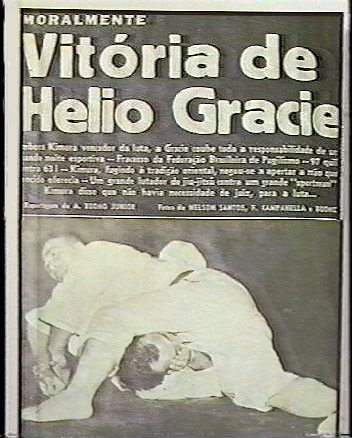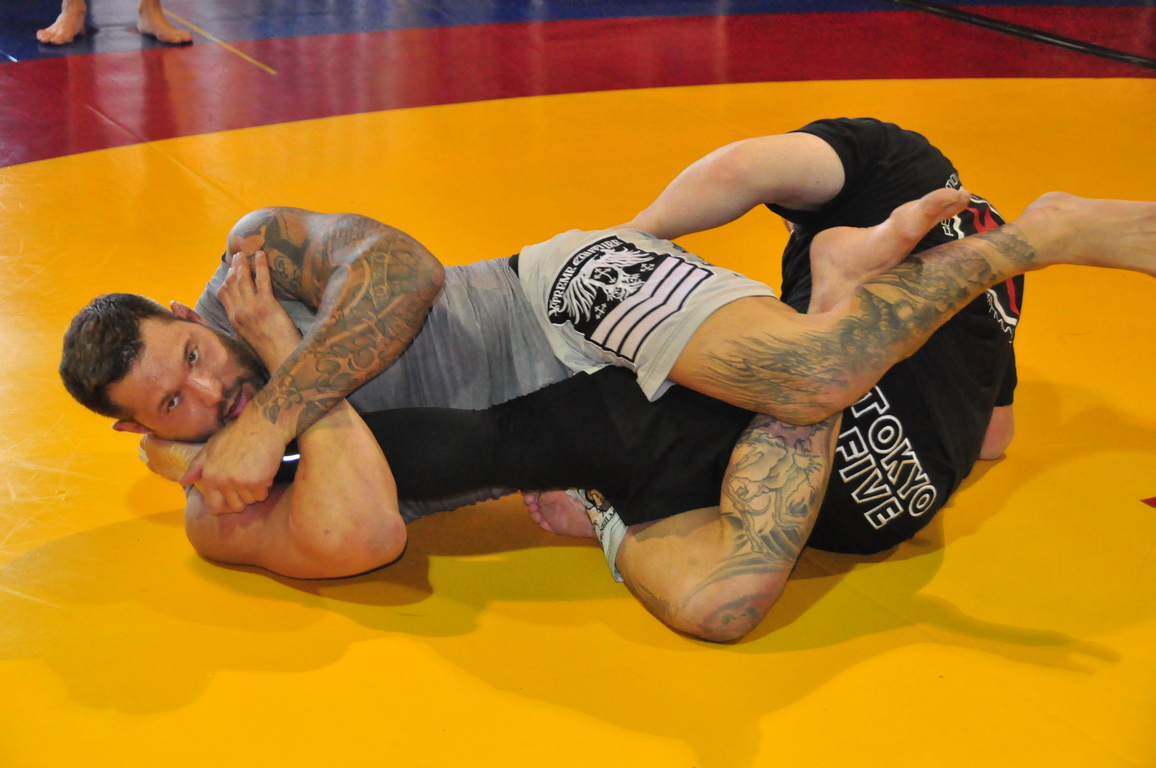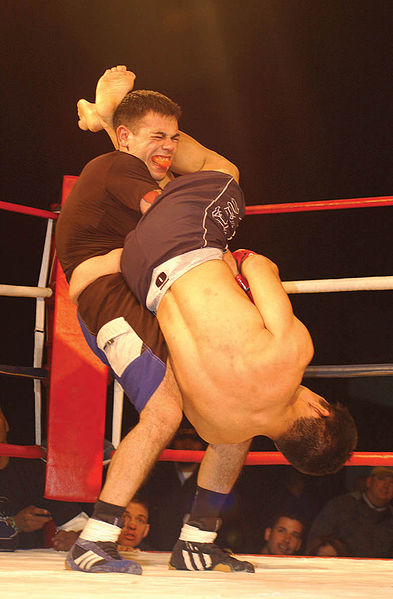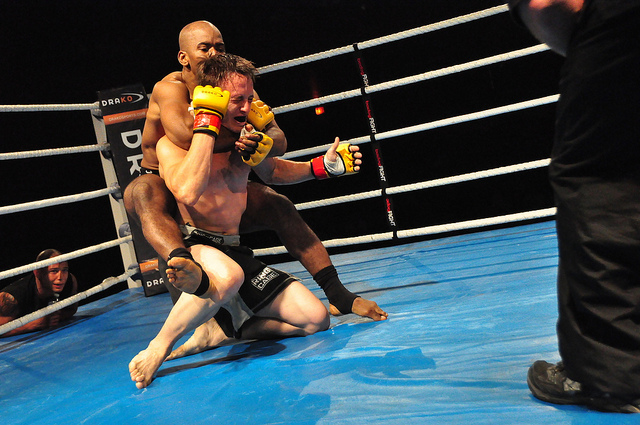
The Top 10 Most Effective Submission Techniques in MMA According to Statistics (and Some Cools Facts About Them)
What are MMA’s most effective submission techniques? Which of the hundreds of submission techniques available, many MMA fighters and grapplers are left wondering which really work and which don’t. For years people like me who are learning the grappling arts have pondered over the question. Ponder no more. Thanks to the people behind this awesome website we now have real hard numbers which tell the tale. These people have kept tally of each successful submission technique which ended a fight in the UFC, and their count goes all the way back to UFC 1 and all the way up to UFC’s latest events. Considering that UFC is without doubt the world’s most dominant MMA promotion and is what got MMA off the ground, it’s safe to equate the top finishing submission techniques in UFC with those in MMA in general. Now we can get a real picture of which techniques are the ones most likely to end a fight.
Here it is, with cheese on top – the top 10 top finishers in MMA:
Top 10 – Anaconda Choke (1.3%)
The Anaconda Choke, sometimes called the Gator Choke, edges in the top ten with this powerful technique accounting for 1.3% of all submission finishes in the UFC. The Anaconda Choke or the Gator Choke is aptly named with the twisting maneuver from the front headlock position that sweeps your opponent of his feet and slowly squeezes out the life force from him with your arms. Just like a real life anaconda pouncing on it’s hapless prey in the wild, though the submission usually starts with an explosive wild thrashing roll, it will definitely end with a slowly tightening squeeze, choking out your opponent.
Top 9 – Knee Bar (1.6%)

The Knee Bar also known as the straight Leg Bar, is a devastating move which has stopped a coupe more people in the UFC than the Anaconda Choke. This leglock is designed to hyperextend the knee. Having your knee bend in the other direction it’s not suppose to is definitely an unsettling experience.
Top 8 – D’Arce Choke (1.7%)
The D’Arce Choke, sometimes called a Brabo Choke, is similar to the Anaconda Choke, however the difference is that the choking arm is threaded under the near arm, in front of the opponent’s neck, and on top of the far arm. The choke gets its name from Joe D’Arce, a third-degree Brazilian Jiu-Jitsu black belt under the tutelage of the Gracie’s. Though not the inventor of the choke, D’Arce performed this choke often and with great success in many Jiu-Jitsu and submission grappling tournaments.
Top 7 – Heel Hook (1.7%)
Heel hooks are banned in BJJ, Sambo and other grappling sports except in advanced competition for a reason. Heel hooks transfer the torque from your twisting arms and body, using your opponents heel as a lever, which is usually snuggly hooked inside the crook of your elbow, to your opponent’s knee. Another thing about Heel Hooks which makes it the bane of competitive grappling is that with heel hooks you won’t really feel excruciating pain until the ligaments start tearing, with the possibility of injuring your opponent with permanently consequences.
For self-defense purposes, it’s a great way to put someone in a world of hurt and bust his Anterior Cruciate Ligament or ACL, the ligaments in the knee which control the knee’s stability primarily from twisting movements. A good heel hook, especially if the one on the receiving end has shoes on which can provide extra leverage, can seriously cripple an attacker.
If you’re caught in a heel hook, and you know it’s sunk in deep, tap out.
Top 6 – Kimura (3.8%)
One of my personal favorites. The Kimura, among Judo practitioners also called the gyaku ude-garami or just ude-garami, is a shoulder lock (see the picture at the top of the article) named after Masahiko Kimura who who used this technique to defeat and break the arm of the then young man Hélio Gracie in a submissions-only match. The match happened in Brazil in 1951 in front of a 20,000 strong wild audience, including the President and Vice President of Brazil at ringside (no joke). Needless to say, Kimura was pelted by raw eggs as he approached the ring. The match ended though after Gracie’s corner threw the towel in because he refused to tap, even after his arm was broken by the ude-garami with a very audible crack.
Masahiko Kimura is revered as one of the best Judo players in history. Starting Judo at 9 years old, he reached 4th dan black belt at 16 years old, and by the time he was 18 years old he was awarded the 5th dan, the highest Judo level awarded for fighting ability (equivalent to a 6th degree black belt in BJJ). During his peak, his training regimen included doing one thousand push ups daily, 9 hours of practice every day, and practicing his favorite throws against small trees as resistance. The force of his throws were so tremendous that typically on a training day about ten of his sparring partners would often suffer concussions and lose consciousness from them. He also had excellent ground work, and he was especially feared for, as you guessed it, his gyaku ude-garami, the submission technique that now carries his name.
The Big 5 Submissions
The next five submissions can be called “The Big 5 Submission”, since these 5 submissions alone make up for more than 80% of all submission finishes in the UFC.
Top 5 – Arm Triangle (5.3%)
The Arm Triangle choke, also called the Pillow Choke, is performed typically by locking your opponent’s head and one arm with one of your arms is wrapped around and the hand resting on the opposite hand. one hand in the crook of an elbow. In effect, you choke out your opponent or cut of the blood supply to his
It is usually done when one has dominant top control or side control, but it can be done from other positions as well.
Top 4 – Arm Bar (7.3%)
The Arm Bar, called the juji-gatame Judo, is perhaps the most iconic of modern submission techniques. Basically, an Arm Bar is a technique where you isolate your opponents arm between your legs and make it bend in the direction it’s not suppose too. A number of variation of the Arm Bar remain popular in competition, including the flying Arm Bar, which is launched from the standing position.
Perhaps in the modern sport of MMA there is no other athlete who symbolizes the effectivity of Arm Bars more than Ronda “Rowdy” Rousey who has won 9 out of her 11 professional MMA fights (a number of them in the UFC) and all 3 of her amateur MMA fights on record by Arm Bar within the first minute of the fight. This undefeated UFC Women’s Bantamweight Champion is also an Olympic Judo gold medalist, having crushed all her competition in the 2008 Beijing Olympics. She is also ranked the number 1 pound-for-pound female MMA fighter of all time as of time of writing.

Top 3 – Triangle Choke (16.5%)
Taking a 16.5% piece of the pie of all submission finishes in the UFC, the Triangle Choke takes it’s place as one of MMA’s most effective techniques. A Triangle Choke, or sankaku-jime in Judo, strangles your opponent by encircling your opponent’s neck and one arm with your legs in a figure-four position, making the shape of a triangle. The objective of the choke is to constrict the blood flow to the brain by the pressure applied on your opponent’s carotid arteries.
If you find yourself trapped in well-applied Triangle Choke, and things can get really dark and fuzzy really quickly and you’ll be put to sleep if you don’t tap out.
Top 2 – Guillotine Choke (18.2%)
The Guillotine Choke certainly deserves to carry the name of a French execution device, the guillotine, which was invented to swiftly behead criminals and dissidents of the time. This is the second highest ranking submission technique responsible for 18.2% of all fights ended in the UFC by submission.
By encircling your opponent’s head from the front with your arms, like the blades of it’s namesake execution machine coming down to chop off a head, you can quickly end a fight either by applying the pressure to cut off the blood flow to the head or by clamping down hard on the wind pipe for a quick finish, depending on the position grip and the direction the pressure applied.
Top 1 – Rear Naked Choke (33.6%)

The Rear Naked Choke, often abbreviated to RNC, has ended a whooping 33.6% of all successful submissions in the UFC. That means one out of three submissions in the UFC were won applying this king of submissions.
Fortunately for the practitioner, the Rear Naked Choke has nothing to do with being naked. While the Japanese name for this choke hadaka-jime, can be literally translated as “naked strangle”, referring to fact that you don’t have to hold on to your opponent’s gi or clothing to choke him but only your bare arms, because in traditional Jiu-jitsu and Judo, most of the chokes techniques requirs the practitioner to hold onto this opponent’s lapel or the clothing near the neck area for leverage.
More interesting is the Portuguese/Brazilian name for this choke, the Mata Leão, literally “to kill the lion”. It is speculated that this name arose from reference to the 1950’s blockbuster movie released in Brazil which depicted the biblical Samson, in defense of the fair Delilah, slaying a lion with his bare hands by choking it from behind. The release of the movie in Brazilian, at a time when Vale Tudo, or no-hold barred fighting events were gaining popularity in Brazil make this connection likely.
Conclusion
With literally hundreds of submissions and their variations available to the martial martial arts and grappling practitioner, it can be a challenge deciding which ones you should learn and specialize in first. However, considering that outside the top ten top submission in MMA all other submissions techniques account for just 9% for submission finishes in MMA, this gives you a pretty good idea which techniques have more opportunities for successful application. This of course does not mean that the other techniques which comprise this outlying 9% are not effective, but only that you might not find as many opportunity to apply them successfully as the top ten, especially “The Big 5”.
Though these top techniques are mostly also the most fundamental of the submission techniques, this does not mean that the practitioner should take them for granted. All the more because there are many opportunities to use them one should constantly practice them, learn to recognize opportunities to apply them, and refine the technique behind them and their variations, to increase the efficiency of these already high-percentage techniques.
Note: The percentages attributed to each submission may vary from the actual UFC stats because by the time you check out this article there are bound to be some slight changes since the time this article was published, because the totally cool people who keep the data are so up-to-date down to the latest UFC event. It’s safe to say though that these top ten will remain the top ten for the foreseeable future.
(UPDATE 10/27/17: I checked the stats are up to date until Sept 2015, but the rankings are still the same)

Recommended reading for the MMA history buff: Here a biography on Kimura, the one who’s name is behind the top 6 submission on this list: Kimura: The Triumphs and Tragedy of One of Judo’s Greatest and Most Controversial Judo Champions
Photo information and credits
Photo of kneebar: www.MartialArtsNomad.com , licensed under CC BY 2.0; Photo of Kimura vs Helio non-free use rationale: from www.wikipedia.org;
Photo of armbar: public domain;
Photo of rear-naked choke: www.MartialArtsNomad.com , licensed under CC BY 2.

Leave a Reply